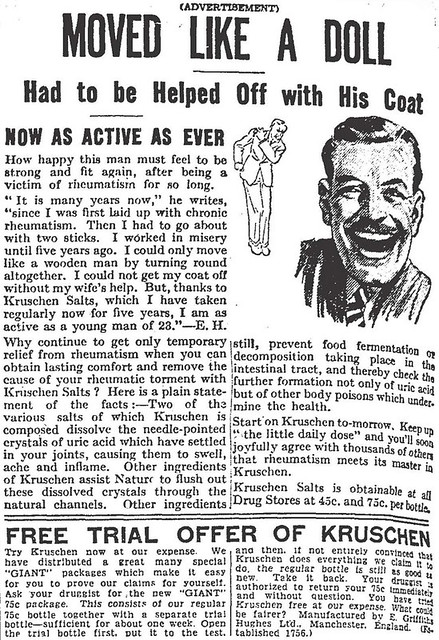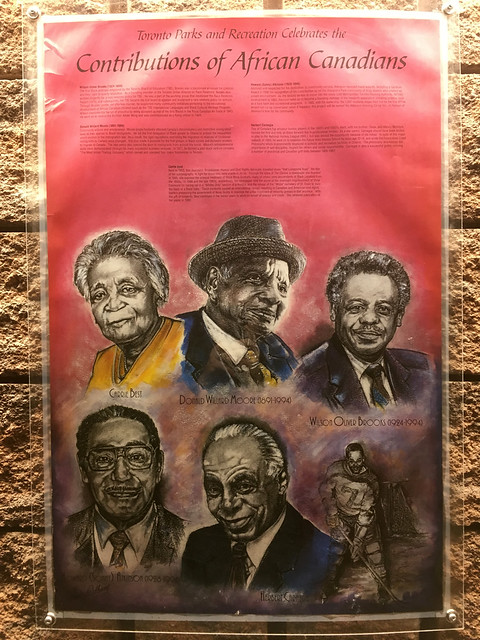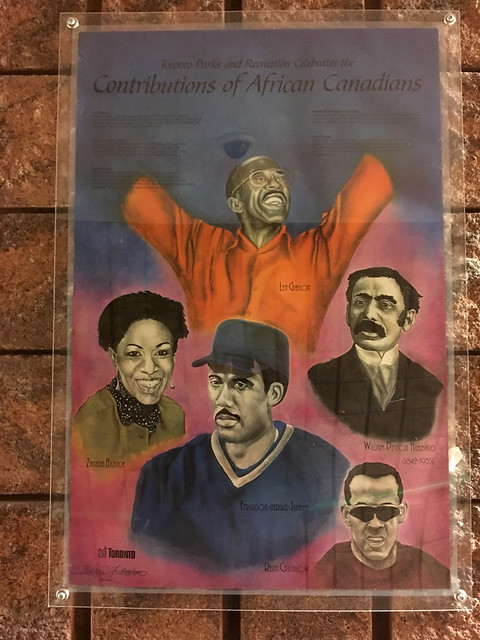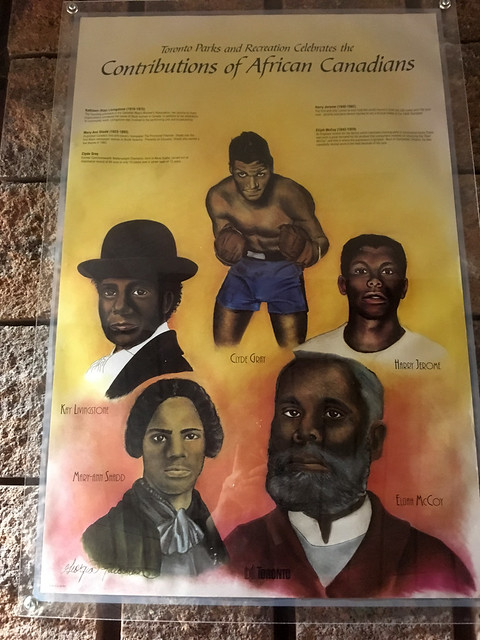Tuesday, February 13, 2018
Pressing Questions of the Moment Department: Toilet Paper Roll Size
Nearly all packages of toilet paper proudly proclaim that they contain "double" or "triple" rolls. Yet I don't know if I have ever seen a "single" or "regular" sized roll.
Are they referring to a size nobody has seen since I was born? Is "regular" the one-ply, sandpapery stuff preferred by budget-conscious public toilets? Or are manufacturers inventing value that doesn't exist?
Apparently "regular" size rolls exist in the United States, and they sound skimpy. This coming from a country where you can buy single rolls at the supermarket, which may reflect customers who are occasional toilet paper users, on tight budgets, prefer it over Kleenex for general tissue needs, or require an emergency roll for their backpack/car/visit to a public place.
All I know is that regardless of the alleged sizing, most rolls disappear in a hurry.
Friday, February 9, 2018
Motion Pictures Will Boost Canada (and a peek at Moving Picture World)
 |
| Lindsay Post, February 14, 1913. |
Since the Internet Archive has posted back issues of Moving Picture World, let's take a look at what other movies were discussed in its April 26, 1913 edition.
The most historically important film listed was The Bangville Police, which was one of the first appearances of the Keystone Kops. "More laughable absurdities, in which Fred Mace appears as police captain in a home-made automobile. As a whole, this reel is very pleasing and full of laughs."
Which is a longer description than what was printed about Edison's The Rocky Mountains in Winter: "Some good views of snowy hills and valleys." One can hear the copy writer straining for something nice to say. Not that MPW wasn't capable of being critical--the short comment about Pathe's The Happy Home calls it "A picture with an unusually poor scenario. The director couldn't save it."
An ad for upcoming films from Universal. Only a drama spotlighting one of the leaders of the Reign of Terror during the French Revolution earns an adjective. At the time, Universal would have celebrated the first anniversary of its incorporation.
Wednesday, February 7, 2018
Public Transit Department: " A Small-Sized Riot Nipped in the Bud"
 |
| Toronto Star, October 25, 1918. |
I wonder how much this situation may have been exacerbated by the Toronto Railway Company's overall poor public PR image. Other newspaper stories around this time hinted at the eventual public ownership of all of the city's streetcar lines after the TRC's franchise expired in 1921.
Speaking of public transit overcrowding, check out John Lorinc's Spacing piece on the possibility that years of not properly managing the subway system's passenger capacity will have fatal consequences.
Monday, February 5, 2018
Scary Pitchmen Department
Rummaging through old newspapers, I frequently encounter startling illustrations in ads that make you wonder if the advertiser was trying to draw customers or scare the bejeezus out of readers.
Here are some recent finds.
This fellow topped an ad for a downtown Toronto furniture store. The pinprick eyes and dark shadows surrounding them suggest something alien or robotic. Is a trace of an evil smirk detectable? Or is he hypnotizing the reader into buying beds and victory bonds?
When he talks, it's in a slow, mechanical, increasingly menacing way.
"How may I help you? Interested in that chair? It's not within your financial limitations. What you should buy is a bond. A Victory Bond. A bond to help the war effort. Our war effort. BUY THAT BOND TO-DAY. It's good bih-zi-NESS! It's pay-tree-OT-ISM!!! We will win the WAR! CONQUER! ANNIHILATE!!!"
(At which point the store manager comes to unplug our creepy friend, apologize to the scared customers, and sell them more bonds).
Cure-all patent medicines used illustrations of "customers" testifying to the miraculous powers of their product. Sometimes, you might accept the stuff worked. Not so sure in this case. Mrs. Minnett still doesn't look too happy (she had been in pain for 60 years, and was possibly suffered from phantom remnants of her long-term ailment), unless she simply hated the camera. Maybe it's the low-grade reproduction, but when Louisa and I looked at her picture, we decided she was the offspring of Jo-Jo the Dog-Faced Boy and Cloris Leachman as Frau Blucher from Young Frankenstein. Also, her hair was possibly sculpted from clay.
This ad does not make a strong case for the effectiveness of Kruschen Salts. Before, our testifier moved like a wooden man. After, he looks like a wooden man, with an unnatural smile only a ventriloquist's dummy can flash.
Here are some recent finds.
 |
| Toronto Daily News, November 17, 1917. |
This fellow topped an ad for a downtown Toronto furniture store. The pinprick eyes and dark shadows surrounding them suggest something alien or robotic. Is a trace of an evil smirk detectable? Or is he hypnotizing the reader into buying beds and victory bonds?
When he talks, it's in a slow, mechanical, increasingly menacing way.
"How may I help you? Interested in that chair? It's not within your financial limitations. What you should buy is a bond. A Victory Bond. A bond to help the war effort. Our war effort. BUY THAT BOND TO-DAY. It's good bih-zi-NESS! It's pay-tree-OT-ISM!!! We will win the WAR! CONQUER! ANNIHILATE!!!"
(At which point the store manager comes to unplug our creepy friend, apologize to the scared customers, and sell them more bonds).
 |
| Lindsay Watchman-Warder, February 17, 1910. |
Cure-all patent medicines used illustrations of "customers" testifying to the miraculous powers of their product. Sometimes, you might accept the stuff worked. Not so sure in this case. Mrs. Minnett still doesn't look too happy (she had been in pain for 60 years, and was possibly suffered from phantom remnants of her long-term ailment), unless she simply hated the camera. Maybe it's the low-grade reproduction, but when Louisa and I looked at her picture, we decided she was the offspring of Jo-Jo the Dog-Faced Boy and Cloris Leachman as Frau Blucher from Young Frankenstein. Also, her hair was possibly sculpted from clay.
 |
| Toronto Star, February 9, 1933. |
Sunday, February 4, 2018
"Possibly the most daringly dramatic development in the field of contemporary literature"
While sifting through my possessions prior to moving in with Louisa a few years ago, I found a box of comics I thought I had gotten rid of. The contents were longstanding parts of my once massive collection that I probably held on to for sentimental value. Since these comics were half-forgotten, the sentimental pull wasn't that strong, so they quickly wound up in boxes designated for selling off.
Among the issues I found was one of the
first 1960s Marvel Comics I owned: Fantastic Four #41, cover dated August 1965.
I bought it in Ann Arbor at Dawn Treader Book Shop in the late 1980s, when it
was located on the north side of Liberty Street. Dawn Trader was part of the
first circuit Dad and I utilized when I began going downtown with him instead
of following my mother and sister to Briarwood Mall: Afterwords, Borders (the flagship
store, then on State Street), David’s Books, Dawn Treader, and Schoolkids’
Records. Only Dawn Trader survives of that quartet, notable for the amusing items
lining its outdoor bargain racks. Its current space is far roomier than the
one I bought FF #41, which contained the narrowest aisles I've ever encountered in
a used book store. We are talking airplane or subway seat wide. Aisles narrow
enough that a chunky pre-teen had to slip through sideways. One sensed
the owner maximized their limited basement space to display as much as
possible.
FF #41 sat in a box of $2 comics, a small fortune compared to the pennies I spent building my
collection at stores like City Lights in London. Most issues in this box
were mid-1960s vintage, titles I was discovering through endless borrowings of
histories of comic books from the Windsor Public Library and a serialized
history Marvel published at the time, Marvel Saga. It dawned on me a few
years later that they might have been slightly undercharging for early Marvel
superhero titles like Strange Tales and Tales of Suspense, but by that time,
the box was long gone.
From the box I picked out three comics: an
issue of the first volume of the Official Handbook of the Marvel Universe (the
second volume was being published at the time, which was nirvana for a nerdy
budding historian dipping into the world of comics); Tales to Astonish #72 (a
classic Marvel split-book: one half featured the Sub-Mariner in the midst of the long quest which launched his 1960s solo adventures, while the other starred the Hulk,
temporarily sharing Bruce Banner’s brain, worrying about returning to human form
lest a bullet in his head kills him upon transforming – drama!); and FF #41.
It may have been the age of the issue. Or
that I was regularly reading Fantastic Four at the time, even if 1987-88 was
not one of the series’ finest hours (this was the period where the Thing resembled a spiky pineapple). Or that it was an honest-to-God Stan Lee
and Jack Kirby comic book.
Or it may have been the cover blurb:
“Possibly the most daringly dramatic development in the field of contemporary
literature.” Even at that age, I sensed Stan was pushing it, but in
a charmingly hyperbolic way. This was a period where Marvel went full-tilt with long-running sagas in its titles, where storylines stretched for as long as two years without taking a breather, as opposed to wrapping up in an issue or two.
The story for FF#41 began five issues earlier, with the introduction of the Frightful Four, who was comprised of two villains from the Human Torch's solo series (the Wizard and the Trapster), a Spider-Man foe (Sandman), and a mysterious new character named Medusa. Over the next few issues, the Frightful Four caused an explosion which removed the FF's powers...just in time for Doctor Doom to snap out of a hypnotic suggestion Reed Richards had placed on him and decide to kill the team once and for all. With the aid of Daredevil, the FF regain their headquarters, then their powers. But for Ben Grimm, becoming the Thing again is not a happy moment, and he nearly kills Doom. Pissed off at being forced to be a freak again, the Thing quits the team.
Which leads us into FF #41. That daring development promised on the cover? Ben is brainwashed by the Frightful Four. As Supermegamonkey puts it, we know the Thing has gone bad "because he chain smokes his ceegars, even during fights." The fighting ensues for two more issues, during which the Human Torch pretends to be brainwashed (there are plenty of scrambled brains in this run of FF). This then leads into Reed and Sue's wedding, then a 17-issue sequence which introduces the Inhumans, Galactus, Silver Surfer, and the Black Panther.
Some thoughts on why this run of FF and a simultaneous stretch of Thor satisfied the growing number of Marvel readers, from Will Jacobs and Gerard Jones's book The Comic Book Heroes:
These voyages continue to inspire today, as elements from these runs fill movie theatres.
My comic book collection grew steadily after picking up this issue, as I scoured bins for old comics that were rarely in pristine physical condition. At its peak in the early 2000s, it covered several rows of bookshelves in my Mom's basement. But then it was time to cull, down to its present state of a shelf of collected editions and graphic novels, and a tiny sampling of single issues. Selling off the rest kept me financially afloat during one of those dry periods freelancers encounter. I don't regret that decision, since there are plenty of sources for whenever I feel like indulging in more daringly dramatic developments in 20th century graphic literature.
The story for FF#41 began five issues earlier, with the introduction of the Frightful Four, who was comprised of two villains from the Human Torch's solo series (the Wizard and the Trapster), a Spider-Man foe (Sandman), and a mysterious new character named Medusa. Over the next few issues, the Frightful Four caused an explosion which removed the FF's powers...just in time for Doctor Doom to snap out of a hypnotic suggestion Reed Richards had placed on him and decide to kill the team once and for all. With the aid of Daredevil, the FF regain their headquarters, then their powers. But for Ben Grimm, becoming the Thing again is not a happy moment, and he nearly kills Doom. Pissed off at being forced to be a freak again, the Thing quits the team.
Which leads us into FF #41. That daring development promised on the cover? Ben is brainwashed by the Frightful Four. As Supermegamonkey puts it, we know the Thing has gone bad "because he chain smokes his ceegars, even during fights." The fighting ensues for two more issues, during which the Human Torch pretends to be brainwashed (there are plenty of scrambled brains in this run of FF). This then leads into Reed and Sue's wedding, then a 17-issue sequence which introduces the Inhumans, Galactus, Silver Surfer, and the Black Panther.
Some thoughts on why this run of FF and a simultaneous stretch of Thor satisfied the growing number of Marvel readers, from Will Jacobs and Gerard Jones's book The Comic Book Heroes:
To the loyal Marvel fan, who had followed the plot developments from their inception, these two years of Thor and The Fantastic Four were like a wondrous tapestry of lost worlds, distant galaxies, and uncanny creatures; a trip to the newsstand or the drugstore each month became a new step in a voyage into uncharted realms that seemed to have no bounds.
These voyages continue to inspire today, as elements from these runs fill movie theatres.
My comic book collection grew steadily after picking up this issue, as I scoured bins for old comics that were rarely in pristine physical condition. At its peak in the early 2000s, it covered several rows of bookshelves in my Mom's basement. But then it was time to cull, down to its present state of a shelf of collected editions and graphic novels, and a tiny sampling of single issues. Selling off the rest kept me financially afloat during one of those dry periods freelancers encounter. I don't regret that decision, since there are plenty of sources for whenever I feel like indulging in more daringly dramatic developments in 20th century graphic literature.
Saturday, February 3, 2018
Celebratory Posters Department: The Contributions of African Canadians
 |
| Click on image for larger version. |
 |
| Click on image for larger version. |
 |
| Click on image for larger version. |
Friday, February 2, 2018
What Happens to Groundhogs After Groundhog Day? (And Other Cringeworthy Material from a 1930s Small Town Newspaper)
If it's 1930s rural central Ontario, you encourage school children to participate "in the extermination of these farm nuisances."
What amuses me is that the leading community mentioned for kids collecting groundhog tails, Blackstock, is part of my family background. Wonder if any relatives brought any in.
Surfing the interwebs shows that groundhogs are still considered a nuisance by some farmers. Here's a 2016 article from a farming magazine on modern methods of controlling them. As for Groundhog Day, Niche just published a piece on its history in Canada - apparently bears once filled a similar weather-forecasting role.
***
If you find the idea of school children being encouraged to collect the tails of animals disposed of by means you don't want to think about squeamish, know that it's not the only cringeworthy item on this particular newspaper page.
But first, a word from our sponsor.
Let's look at the suggested tea towel pattern for readers to make that week:
Because nothing says cheerfulness that daily stereotypical depictions of a black woman in bright colours. It's doubtful this was an isolated pattern for the era, given how prevalent depictions of "mammies" were - one of the best-selling novels of 1936 was Gone With the Wind, and it's not a stretch to believe these tea towels might have used to clean up the mess left after making a batch of Aunt Jemima pancakes.
Beyond celebrating the struggles and triumphs of the community, Black History Month is a good time to remember that materials like these tea towel patterns existed and think about how they reflected the historical contexts of their era. Why people ever believed these were charming and how society later processed this imagery and reached a point (more or less; some exceptions apply) where it was no longer acceptable is a subject worth contemplating.
***
Also on this page, "Here and There and Everywhere" columnist Dave Morrison Sr. turns reflections on Thanksgiving into a call for good old fashioned justice to prosecute automobile and chicken thieves. "In this civilized so called age, it is almost necessary to carry firearms to protect one from the bandits that prowl by day as well as by night." He suggests that just as chicken farmers had to tattoo their poultry to identify them, children should be as well in an age of kidnappings. Morrison felt hanging thieves from trees on the roadside might act as a good crime deterrent, or that stocks should be used for purse snatchers. In typical grumpy old man/law and order promoter style, Morrison declares that "many people today do not believe to any great extent in the good old days and some ministers speak against it, but just the same it was a better period to live in even if money was scarce and civilization was not as streamlined as it is today. If you do not think as we do on this, stand up in meeting and say so."
A dude dreaming of a mythical glorious past with no trace of irony. Sounds like he'd fit into the current charged political climate just fine.
 |
| All images in this post from the Canadian Statesman (Bowmanville), October 15, 1936. |
Surfing the interwebs shows that groundhogs are still considered a nuisance by some farmers. Here's a 2016 article from a farming magazine on modern methods of controlling them. As for Groundhog Day, Niche just published a piece on its history in Canada - apparently bears once filled a similar weather-forecasting role.
***
If you find the idea of school children being encouraged to collect the tails of animals disposed of by means you don't want to think about squeamish, know that it's not the only cringeworthy item on this particular newspaper page.
But first, a word from our sponsor.
Let's look at the suggested tea towel pattern for readers to make that week:
Because nothing says cheerfulness that daily stereotypical depictions of a black woman in bright colours. It's doubtful this was an isolated pattern for the era, given how prevalent depictions of "mammies" were - one of the best-selling novels of 1936 was Gone With the Wind, and it's not a stretch to believe these tea towels might have used to clean up the mess left after making a batch of Aunt Jemima pancakes.
Beyond celebrating the struggles and triumphs of the community, Black History Month is a good time to remember that materials like these tea towel patterns existed and think about how they reflected the historical contexts of their era. Why people ever believed these were charming and how society later processed this imagery and reached a point (more or less; some exceptions apply) where it was no longer acceptable is a subject worth contemplating.
***
Also on this page, "Here and There and Everywhere" columnist Dave Morrison Sr. turns reflections on Thanksgiving into a call for good old fashioned justice to prosecute automobile and chicken thieves. "In this civilized so called age, it is almost necessary to carry firearms to protect one from the bandits that prowl by day as well as by night." He suggests that just as chicken farmers had to tattoo their poultry to identify them, children should be as well in an age of kidnappings. Morrison felt hanging thieves from trees on the roadside might act as a good crime deterrent, or that stocks should be used for purse snatchers. In typical grumpy old man/law and order promoter style, Morrison declares that "many people today do not believe to any great extent in the good old days and some ministers speak against it, but just the same it was a better period to live in even if money was scarce and civilization was not as streamlined as it is today. If you do not think as we do on this, stand up in meeting and say so."
A dude dreaming of a mythical glorious past with no trace of irony. Sounds like he'd fit into the current charged political climate just fine.
Thursday, February 1, 2018
Happy New Year (Take Two)
 |
| The Enterprise, December 28, 1966. |
Normally I’d mark the turning of a new year on January 1.
But the first month of 2018 was 2017 trying to hang on for as long as possible,
like the guest who refuses to acknowledge that the party’s over. For reasons I don’t
feel like going into, it was a sucky month for my family. So, as the end of January
neared, Louisa and I agreed we’d reset on February 1.
Among the elements of that reset: writing more instead of
staring in front of the computer screen like a drooling zombie. I was inspired
by a recent piece in the New Yorker which lamented the gradual disappearance of
old-school blogging. Thinking about it, I realized that going back to regular
entries on one of my existing blogs might help with several recent concerns.
- Keeping in good writing practice, especially as I hunker down on a book project I’m currently working on.
- Stress relief in a fun, easygoing way.
- Being on social media less. My enjoyment of sites like Facebook and Twitter has waned, both from the feeling that I stare at both too much and, especially in the case of Twitter, the increasing screechiness and toxicity of the postings (which applies to all political leanings). When you reach a point when you frequently wish you could post your own material but avoid most everyone else’s to dodge the mentally-draining onslaught of opinion, there’s a problem. Writing in a freer environment may allow more time for contemplation without having to cram in thoughts, or feel obsessively compelled to see who has liked or noted your work. I want to live a real life, not a virtual/electronic one.
 |
| The Enterprise, December 28, 1966. |
So, this site is being reactivated after a long slumber to
see what unfolds. Not everything will go on here—longer pieces related to
Toronto history will appear on Tales of Toronto (aiming to eventually make that
site a mix of new material and revisited reprints), and bonus material for paid
work will appear on JB’s Warehouse. But everything else will appear here—personal
thoughts, roamings around the city and elsewhere, goofy research discoveries,
etc. There will also be updates for my professional work, as this format seems
easier than rounding that side of my life up into periodic newsletters.
No promises as to how long this effort will last. But it’s worth a shot. Enjoy the trip.
No promises as to how long this effort will last. But it’s worth a shot. Enjoy the trip.
Subscribe to:
Posts (Atom)






